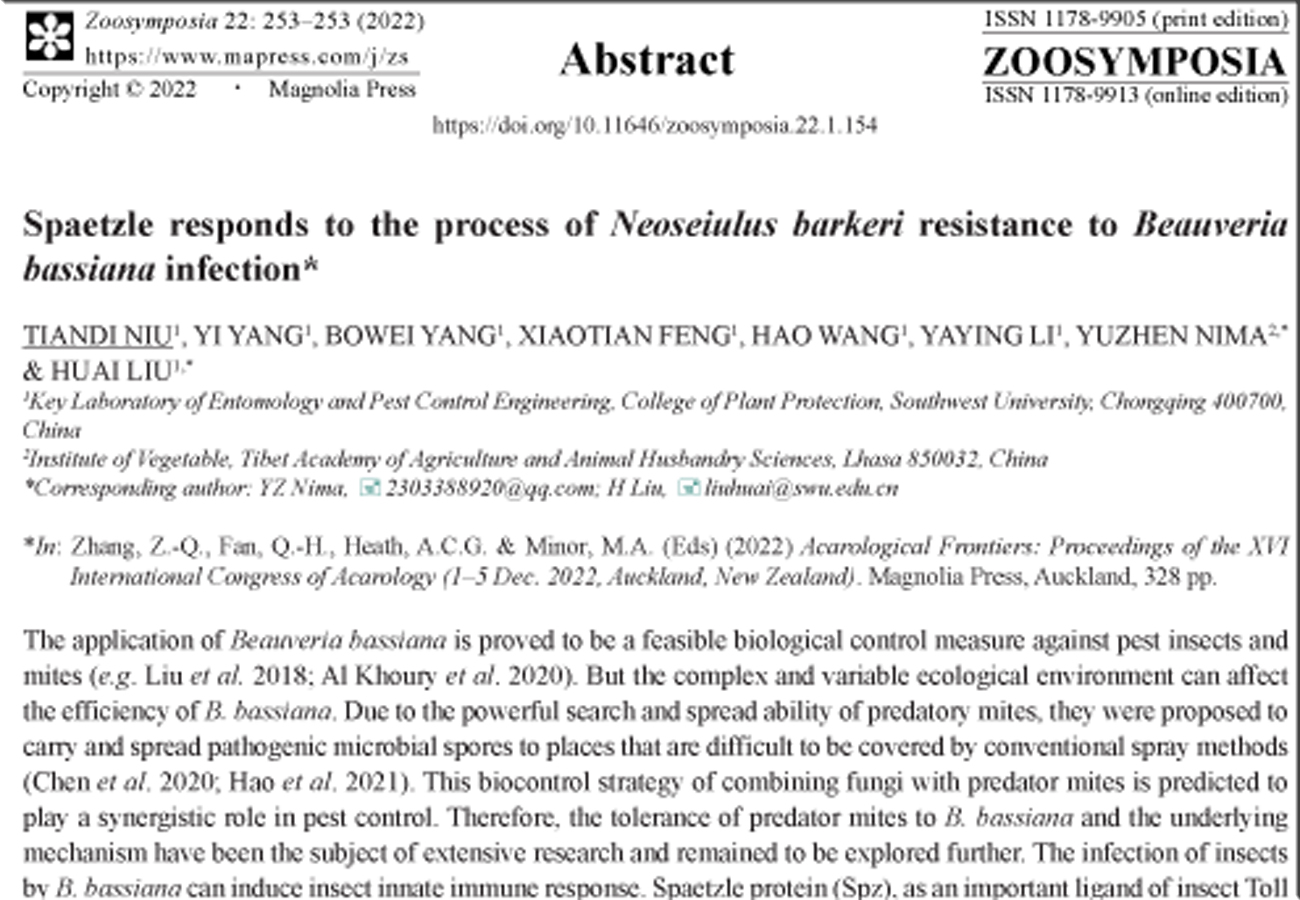Abstract
The application of Beauveria bassiana is proved to be a feasible biological control measure against pest insects and mites (e.g. Liu et al. 2018; Al Khoury et al. 2020). But the complex and variable ecological environment can affect the efficiency of B. bassiana. Due to the powerful search and spread ability of predatory mites, they were proposed to carry and spread pathogenic microbial spores to places that are difficult to be covered by conventional spray methods (Chen et al. 2020; Hao et al. 2021). This biocontrol strategy of combining fungi with predator mites is predicted to play a synergistic role in pest control. Therefore, the tolerance of predator mites to B. bassiana and the underlying mechanism have been the subject of extensive research and remained to be explored further. The infection of insects by B. bassiana can induce insect innate immune response. Spaetzle protein (Spz), as an important ligand of insect Toll pathway, has been demonstrated to play an important role in insect innate immune defense system.
References
Al Khoury, C., Guillot, J. & Nemer, N. (2020) Susceptibility and development of resistance of the mite Tetranychus urticae to aerial conidia and blastospores of the entomopathogenic fungus Beauveria bassiana. Systematic and Applied Acarology, 253, 429–443. https://doi.org/10.11158/saa.25.3.5
Chen, X., Sun, L., Zhang, Y.-X., Zhao, L.-L. & Lin, J.-Z. (2020) Differing infection of Isaria fumosorosea (Wize) Brown & Smith in an aphid (Myzus persicae Sulzer) and predatory mite (Neoseiulus cucumeris Oudemans) under a scanning electron microscope. Systematic and Applied Acarology, 2512, 2263–2272. https://doi.org/10.11158/saa.25.12.9
Hao, H., Li, P., Xu, T., Wu, Q., Zhang, F. & Peng, Z. (2021) Preliminary evaluation of the control effect of two predatory mite species on Eotetranychus sexmaculatus in rubber trees in Hainan Province, China. Systematic and Applied Acarology, 2612, 2287–2296. https://doi.org/10.11158/saa.26.12.7
Liu, J.F., Zhang, Z.Q., Beggs, Jacqueline, R. & Zou, X. (2019) Provisioning predatory mites with entomopathogenic fungi or pollen improves biological control of a greenhouse psyllid pest. Pest Management Science, 75(12), 3200–3209. https://doi.org/10.1002/ps.5438

